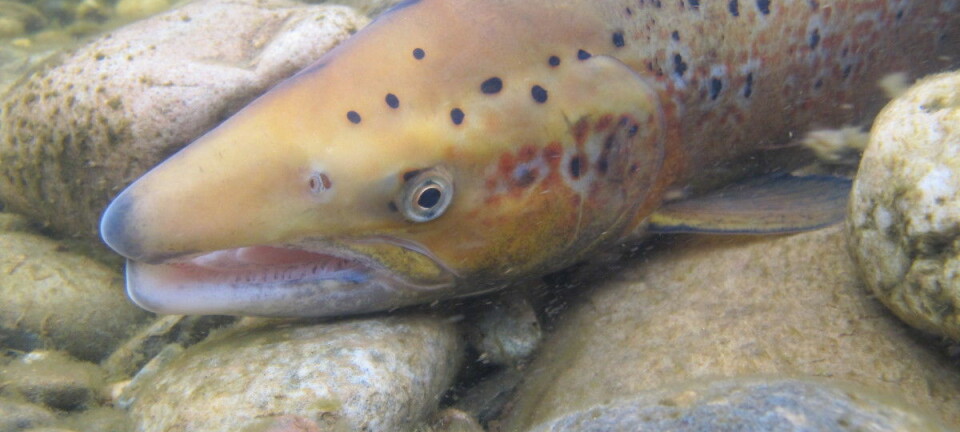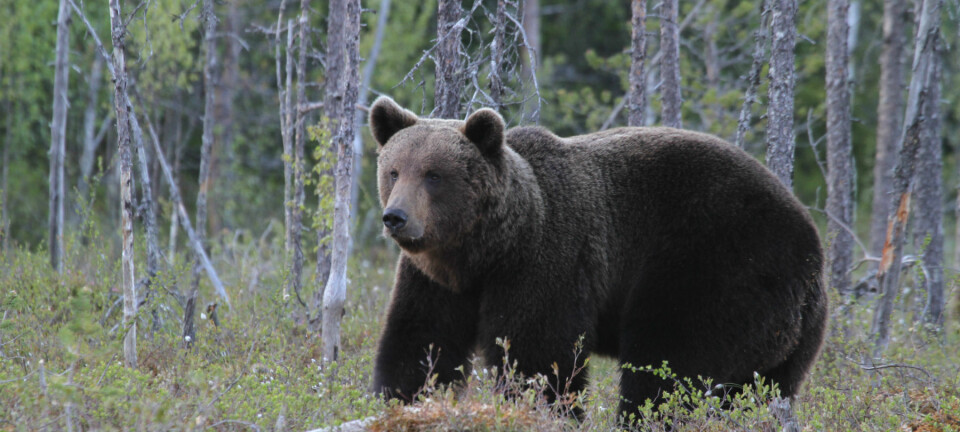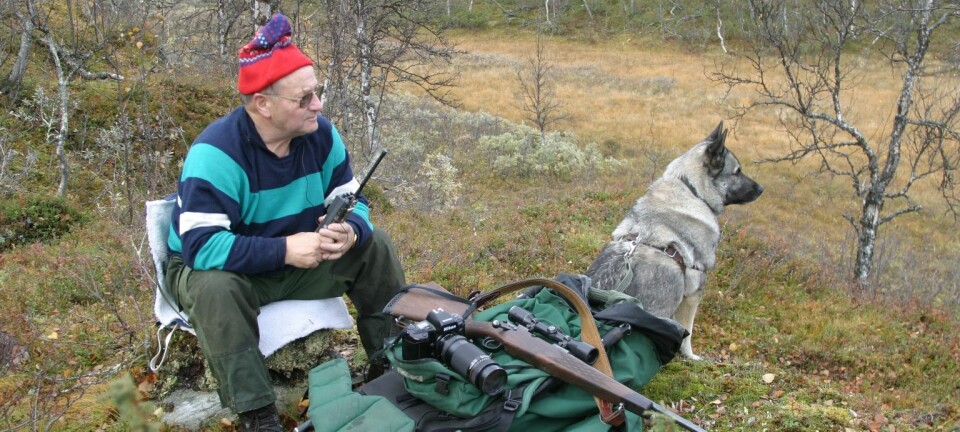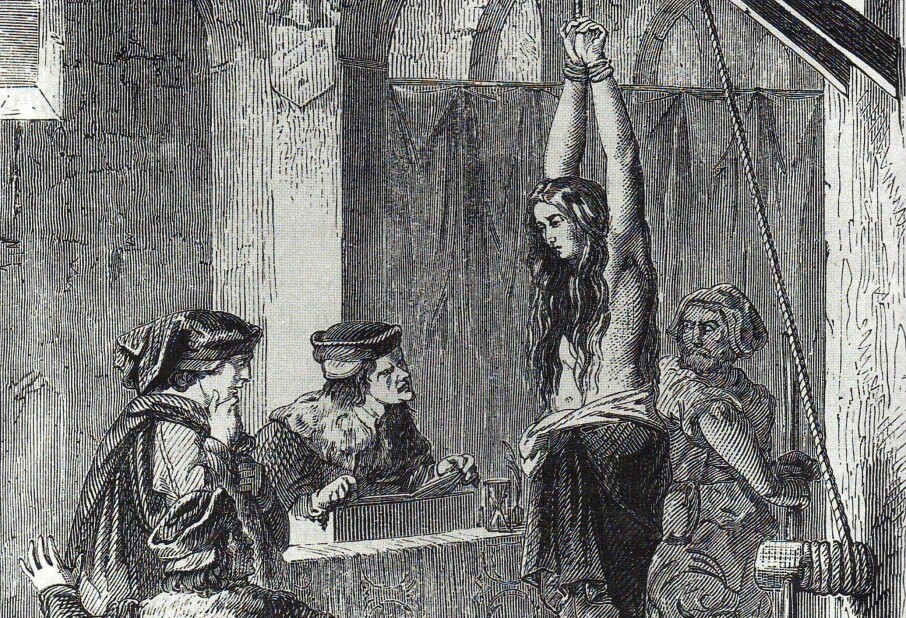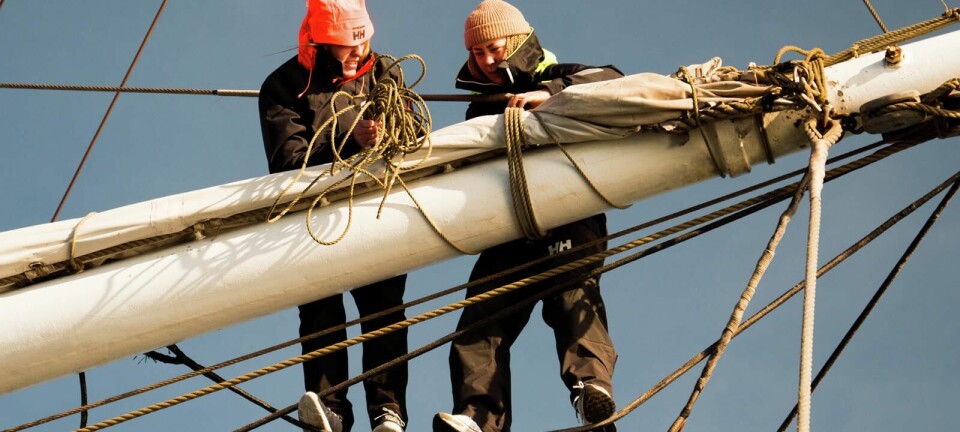This article was produced and financed by NINA - Norwegian Institute for Nature Research - read more

Simple measures can make wind turbines more bird friendly
Birds' lives are saved by black rotor blades or towers, UV-light and smart micro-siting of wind turbines.
As more and bigger wind-power plants are built, the number of birds killed by wind turbines will increase.
This adds to the challenges birds already face, like habitat loss and degradation.
«Luckily, there are cost efficient measures that can reduce the risk of bird collisions,» says Roel May, researcher in Norwegian Institute for Nature Research (NINA).
May and his colleagues have researched and documented the effect of several such mitigation measures.
Black blade saved bird lives
«In one of our studies in the Smøla wind-power plant we saw that mortality decreased by 70 percent after one of the three rotor blades was painted black. Increased contrast makes the wind turbines more visible for birds, so that they can avoid collision,» May says.
Black blades reduce the collision risk for white-tailed eagles, a species Norway has a special responsibility to protect, but also a number of other species.
«It was demanding to paint the rotor blades, since the wind turbines were already installed. But if the painting is done before construction, both the cost and the bird mortality will be reduced,» May says.
Painted towers cut risk in half
It is well known that birds collide with the rotor blades. There has been far less attention to the risk of birds colliding with the turbine towers, and how to reduce this risk.
At the wind-power plant at Smøla, researchers from NINA looked at the effect of painting parts of the turbine towers.
«We painted the lower part of ten turbine towers black. This reduced the mortality for willow ptarmigan by almost 50 percent compared to unpainted wind turbines in the same area,» says Bård Stokke, researcher at NINA.
Do birds respond to ultraviolet lighting?
Unlike humans, many birds can see ultraviolet lighting. May and his colleagues tested if strong lamps with ultraviolet or violet light, could scare the birds away from the lit area. They monitored the area from dusk till dawn.
«The birds were less active and increased their flight altitude. Ultraviolet light had most effect, but the flight altitude was only seven meters higher than usual, which is not much given the size of a rotor blade, which is 40 to 50 metres.»
May says that even if the results are promising, there is still more work to do until they have a fully functional design that can be applied on a wind turbine, with documented effect in the field.
Birds are attracted to updrafts
Wind-power plants can also be made more bird friendly if the wind turbines are not installed in strong updraft areas, to which soaring raptors are attracted. Raptors collide more frequently with wind turbines installed in such areas, like ridges with high orographic uplift or flat terrain with high thermal uplift.
To identify landscape elements with increased collision risk, Frank Hansen from NINA developed a GIS-micro-siting tool to identify updraft areas and calculate the updraft velocities based on open source terrain models, climate data and remote sensing data.
The tool, which has been tested and verified in wind-power plants both in Gibraltar, Spain and on Hitra island in Norway, makes it possible to determine the best location to install the wind turbines in order to minimize the risk of bird collisions.
«As expected, our studies at Hitra and Gibraltar confirm that orographic updrafts are more dominant at northern latitudes, whereas thermal updrafts are more dominant at southern latitudes. The GIS micrositing tool can contribute to a more bird friendly siting of wind turbines,» Frank Hanssen says.
Better planning based on research
The path towards a more sustainable future leads to a continued demand for wind power.
A goal of as low as possible environmental costs per kWh from wind power suggests that wind power development should focus on larger locations with good wind conditions, sufficient infrastructure, and with minimal conflict with environmental considerations.
This requires that planning, establishment and operation of wind-power plants to a larger degree is knowledge-based and applies the mitigation hierarchy to all steps from planning to decommissioning of the wind-power plant.
This hierarchy suggests that you should first avoid, thereafter minimize and reduce, then restore and, as a last resort, compensate for negative impacts. The government will enforce stricter demands for environmental surveys when reviewing new concessions in the time ahead.
«I think thorough pre- and post-construction monitoring, and actively applying mitigating measures, will make it possible to avoid potentially conflict-ridden areas and minimize the negative effects in the plan areas,» says Roel May. «Both the industry and the government should take responsibility and make 'natural wind power' the Norwegian standard.»
References:
- Paint it black: Efficacy of increased wind turbine rotor blade visibility to reduce avian fatalities
- Effect of tower base painting on willow ptarmigan collision rates with wind turbines
- Do birds in flight respond to (ultra)violet lighting?
- High-Resolution Modeling of Uplift Landscapes can Inform Micrositing of Wind Tubines for Soaring Raptors
- Wind turbines cause functional habitat loss for migratory soaring birds
- Match between soaring modes of black kites and the fine-scale distribution of updrafts
- Spatial Multi-Criteria Decision Analysis Tool Suite for Consensus-Based Siting of Renewable Energy Structures








